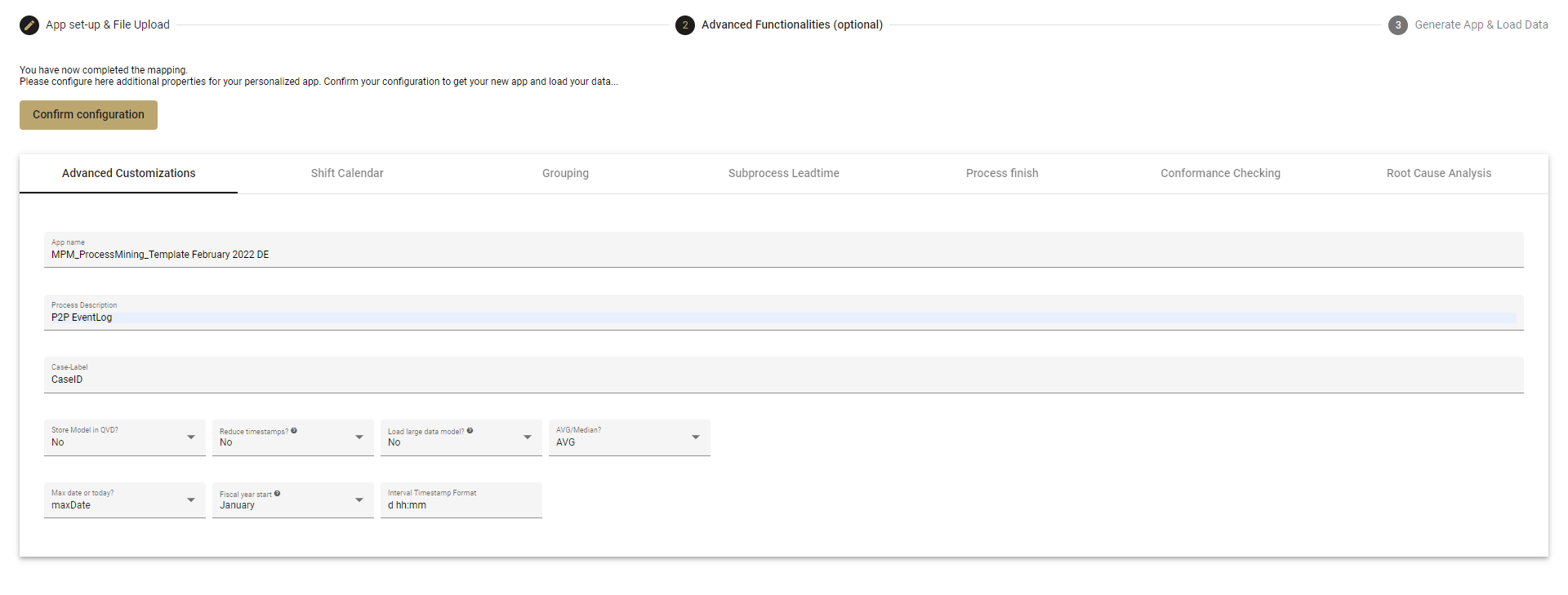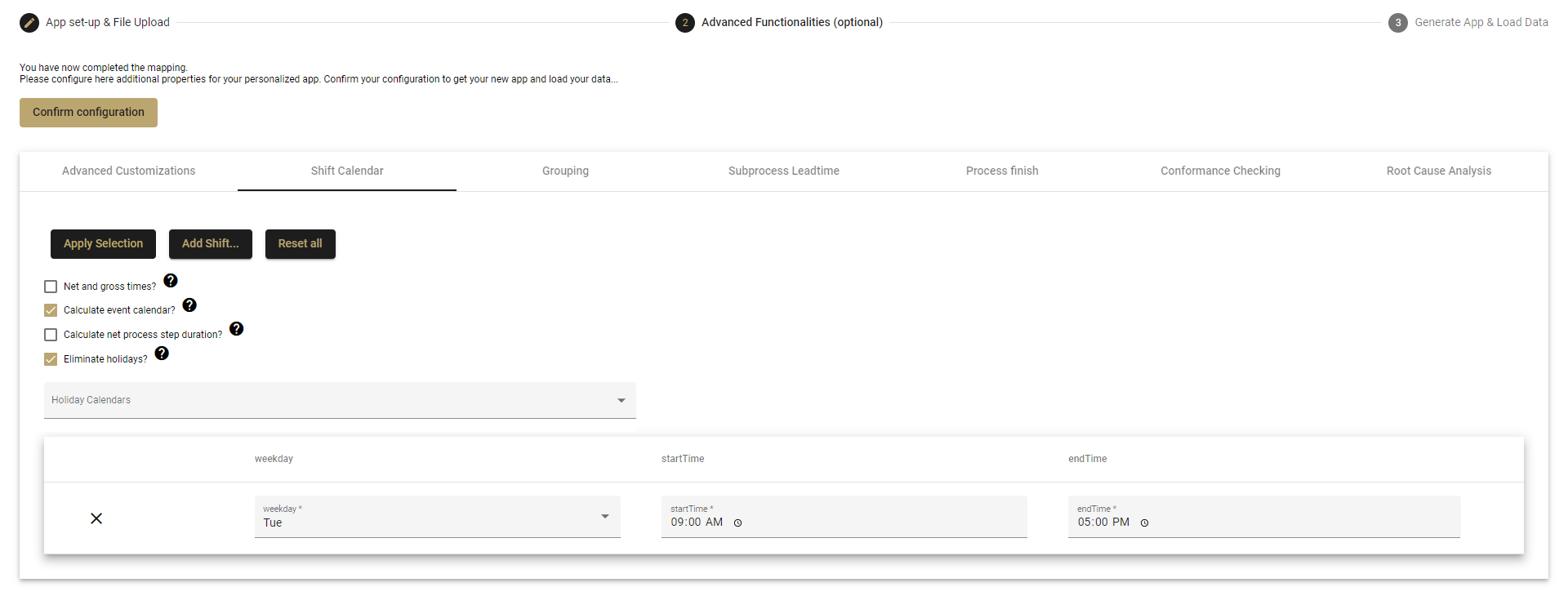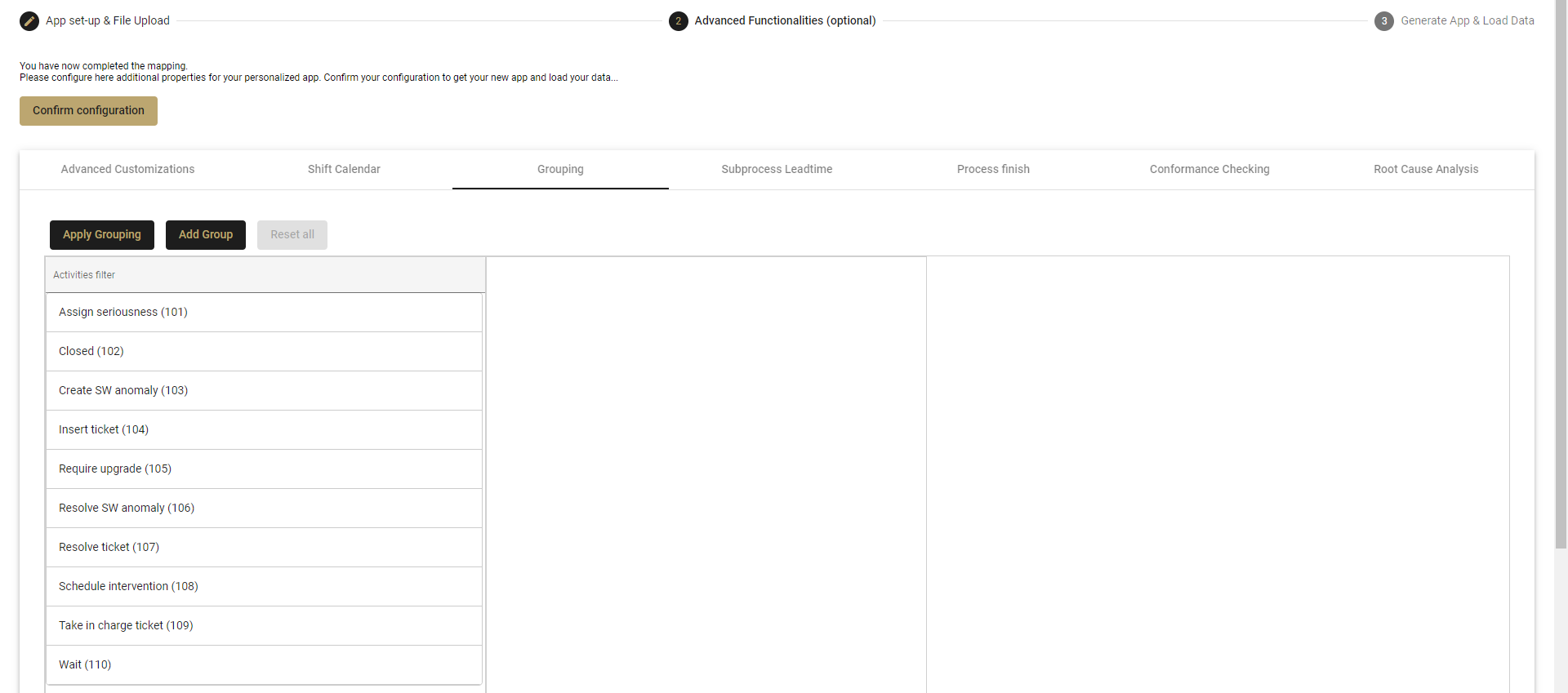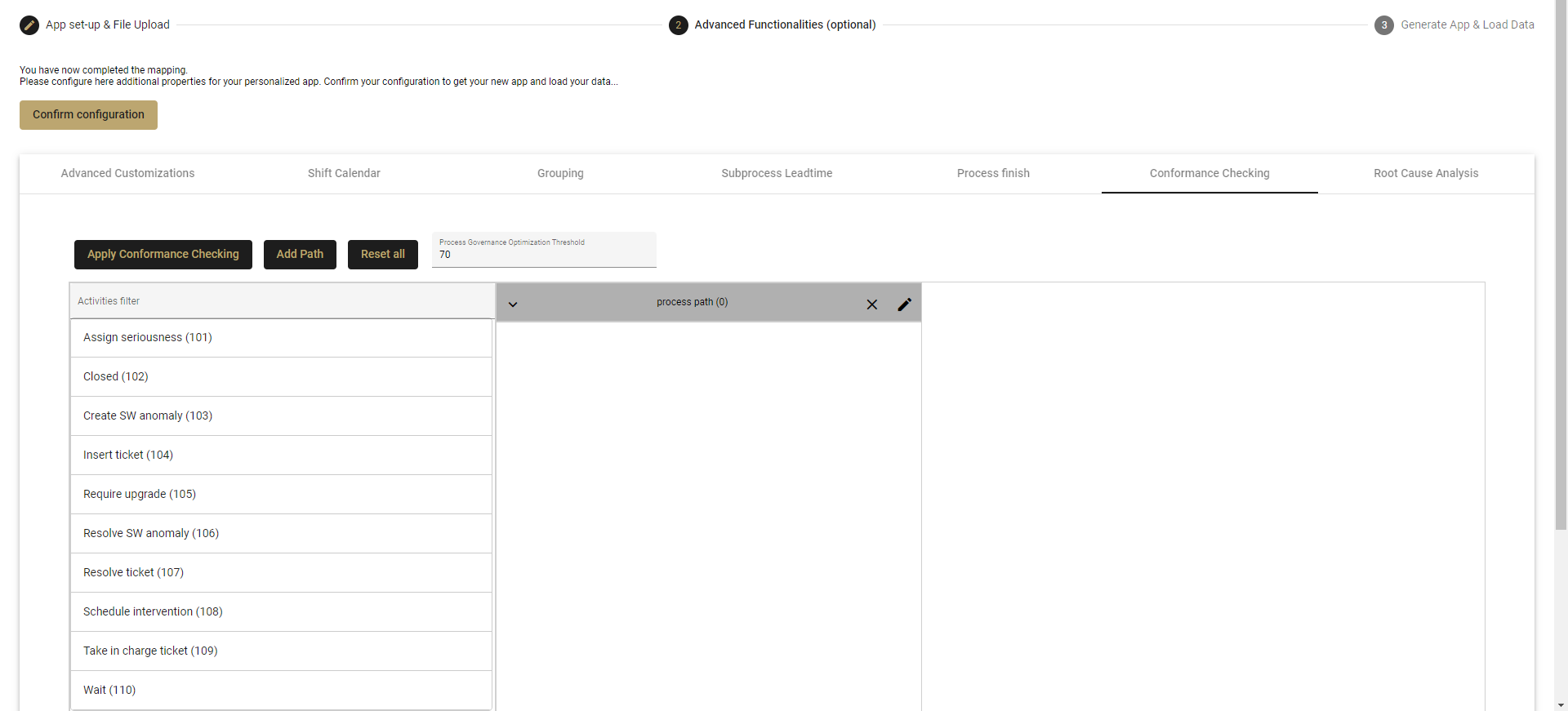|
Edit an Existing App |
Scroll Previous Topic Top Next Topic More |
The Import Wizard offers you the possibility to edit an already existing app in your workspace. To do so, click on the "edit existing app" button that appears when you open the wizard, and follow the steps described below.
1.Select the Template App that should be edited.

2.The first option you have is to adjust some general measures. Use the Advanced Customizations tab to set the process description, case name, and customize the timestamp format, among other things.

3.To configure the shift calender open the tab Shift Calendar. Click on "Add Shift" and select a weekday. Add the start time and end time for the shift. You can delete the shift by clicking on the x symbol on the left side.
| For further configuration of the Shift Calender there are four options: |
a)Calculate net and gross time: Choose if an all-time-related value will be expressed as net time. If the variable is active and the shift calendar is set, then two columns for each time-related field will created (e.g. CaseLeadTime and NetCaseLeadTime).
b)Calculate event calendar: Choose if you want to use the event calender or not. Note, If the calender is calculated, the script performance will slow down. The event Calendar is needed for displaying the shift in which an event took place.
c)Calculate net process step duration: Choose if you like to calculate the net process step duration or not. Keep in mind: if work was done outside of a shift, then the process step duration is reduced, although work was done.
d)Eliminate holidays: Choose if you like to eliminate holidays by activating this option. Deactivate if you would like to ignore holidays. When activated, holidays will not be counted as workdays.
When the shifts are completely defined click on "Apply Selection" to confirm.

4.To enable Grouping with the wizard select the tab Grouping on the configuration step.
| Click Add Group and a new group appears in the empty space on the right of the activity list. Give your group a name by clicking on the pencil-symbol. Then drag and drop the activities below the group. You can add several groups, switch activities from one group to another. Once your groups are defined click on Apply Grouping. You can also delete a group by clicking on the x icon on its right. |

5.To configure partial processes open the tab Subprocess. Click on "Add Leadtime..." and give your subprocess a name in the field Qualifier. Select a start and end activity. It is the same configuration as in Define Subprocesses. You can delete subprocesses by clicking on the x symbol on the right side. When the subprocesses are completely defined click on "Apply Selection" to confirm.

6.To configure when the process is finished go to the tab Process finish. Tick the activities which define a process end. Multiple activities can be selected. Click on "Apply Selection" to save your configuration

7.For Conformance Checking go to the tab Conformance Checking and click on Add Path. Name your happy path by clicking on the pen symbol. Then drag and drop the activities to define your happy path. Several happy paths can be defined. Delete a path by clicking on the x. Click on "Apply Conformance Checking" to save your configuration.

8.For Root Cause Analysis go to the tab Root Cause Analysis and select which optimization potentials (FlagName) you would like to have analyzed by the RCA. Furthermore, decide if you would like to include optimization potentials based on custom lead times. Click on "Apply Selection" to save your configuration.

9.Finally, click on Generate to get the new app and load the data. A log for the app load will be written so you can see if your script runs successfully. A link to your app, which is published in your qlik hub is posted when the script finished running. When you click on the link the app will open and is ready to use.
